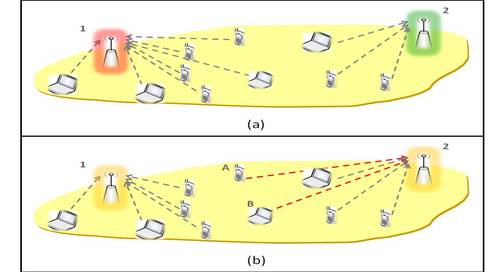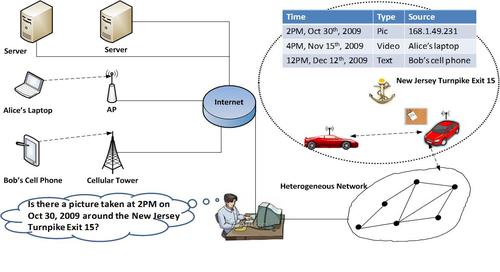Research
Optimized Access Point Association and Data Delivery Management In Manet

WiFi’s high speed, low cost, and wide availability is making it crucial to provide Internet access to data clusters like airports, hotels, sports venues and colleges. With more and more ”hotspots” being WiFi enabled, it is creating easy environment for new usage patterns such as mobile video and VoIP. As more WiFi hotspots are deployed, there is a surge in new usage scenarios, ranging from mobile video and VOIP, to new social networking and pervasive applications. This explosion in demand for connectivity will require that efficient and effective methods be used to optimally manage connectivity. The wide variety of networks available implies that a wireless client may have many choices in terms of the AP to which it can associate. The current prevalent association schemes are based on RSSI measurements or consecutive beacons lost, and perform poorly in many realistic scenarios since they exhibit poor load-balancing.
We propose a distributed association scheme based on channel utilization. We notice that most of today’s popular Internet applications have a minimum bandwidth requirement. However, bandwidth requirements are generally not taken into consideration when making link layer decisions. We argue that channel utilization, which we define as the combined effect of required minimum bandwidth and effective bandwidth, is an important metric in the association process, and by incorporating channel utilization information into the decision making process, we can effectively reduce unnecessary reassociations and improve upper layers performance. Therefore, we design an association protocol in which clients can evaluate the effective bandwidth from the available APs, and make their association decisions based on the their individual bandwidth requirement.
Geo-Cache—Storing Location-aware Data around Geographic Locations through Intermittent Mobile Networks

As people start to use their personal mobile devices such as cellphones, PDAs as sensing devices to collect snapshots of their surroundings on the go, the data captured, both in terms of size and frequency, is increasing at an astonishing rate. These data can serve as traces of our lives, logs of the physical world, and even a trace of scientific phenomena, thus bringing great convenience to the entire society. We focus on a new data sharing architecture to support this pattern of data usage. The novel element of the envisioned data sharing architecture is GeoCache: a local virtual storage that maintains indices into traces of data collected locally around the GeoCache. The data itself resides on devices that captured the data, but traces of data are left in the GeoCache. At a later point in time, the desired data can be located by consulting the GeoCache and searching for traces. If a match is found, then the data requestor can directly contact the producer of the data.
The key supporting components of the architecture include:
• GeoCache Anchoring protocols. The proposed GeoCache anchoring protocols make available GeoCache
in locations without infrastructure. The GeoCache will be kept on mobiles as much as possible,
and adopt a boomerang-like motion around the anchor location. This anchoring process can ensure
low communication overhead and energy consumption in crowded areas, while effectively tethering
geoboards in isolated areas.
• GeoCache Management Protocols. The concomitant GeoCache management protocols efficiently manage
the traces pollinated by personal sensing devices. They deal with critical issues such as scattered GeoCache, over-sized geoboards, and dense geoboards. They also provide mechanisms to help data queries meet GeoCache. Finally, they keep the anchoring process power-aware and power-efficient.
The intellectual merits stem from novel data advertisement, indexing and retrieval paradigms for
personal sensing environments. The new data access models, trace generation, and repository design for
locally generated data should provide a new tool for effectively harvesting personally generated data.